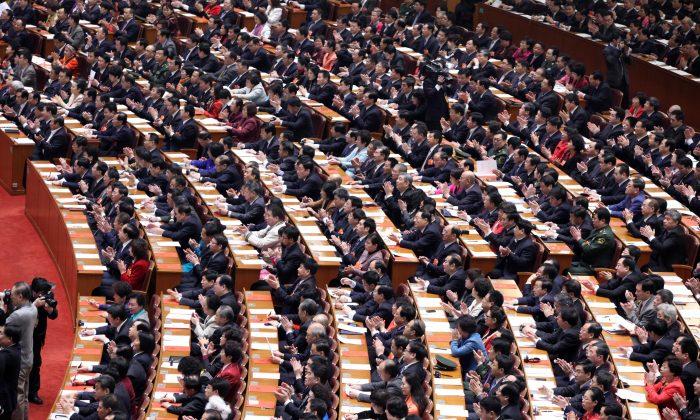China’s exports to the United States have declined for seven consecutive months. Analyses show that this trend may continue as U.S.–China relations further deteriorate.
Data released by China’s General Administration of Customs on March 7 showed the total trade value between the United States and China in the first two months of this year was 702.98 billion yuan (about $102 billion), dropping 10.6 percent year-over-year.
Among them, Chinese exports to the United States were 494.11 billion yuan (about $71.7 billion), a decrease of 15.2 percent, while imports from the United States were 208.87 billion yuan (about $30.3 billion), an increase of 2.8 percent.
The substantial decrease in exports reduced China’s trade surplus with the United States to 285.24 billion yuan ($41.4 billion), down 24.9 percent over last year.
China’s exports to the United States have experienced a seven straight months decline, with a continuing trend. According to the Bank of China Research Institute, the value of the country’s exports to the United States dropped 3.8 percent year-over-year last August.
Meanwhile, the decline in exports to the United States continued to expand in the following three months, respectively 11.6 percent in September, 12.6 percent in October, and 25.4 percent in November. The decline slowed slightly to 19.5 percent in December.
The drop in Chinese exports is especially evident in container freight rates.
According to the World Container Index released by Drewry, a UK-based maritime research consultancy, container freight rates have declined for over a year, with steep drops after last August.
The report’s analysis said the trend would likely intensify in the future due to various factors, including U.S.–China trade conflicts, the decoupling of industrial supply chains from China, and companies shifting their manufacturing out of the country, which would all lead to a reduction in China’s exports to the United States.
Regarding Beijing’s move to offload U.S. debt, Shi Jin (a pseudonym), a former financial analyst at China’s Bank of Communications, said that the move may be a precaution against possible U.S. sanctions and diversify financial risks.
He told The Epoch Times on March 13 that the debt securities have a high rate of return and are guaranteed by the U.S. federal government, making them a stable investment. However, as U.S.–China relations continue to deteriorate, Beijing worries that Washington may apply restrictions on its U.S. debt holdings in the face of sanctions.
Regarding economic and military strength, 66 percent of American adults believe that the Chinese military poses a critical threat to the vital interests of the United States, while 27 percent think it’s an important but not a critical threat, and only 6 percent said it’s not an important threat.







Friends Read Free